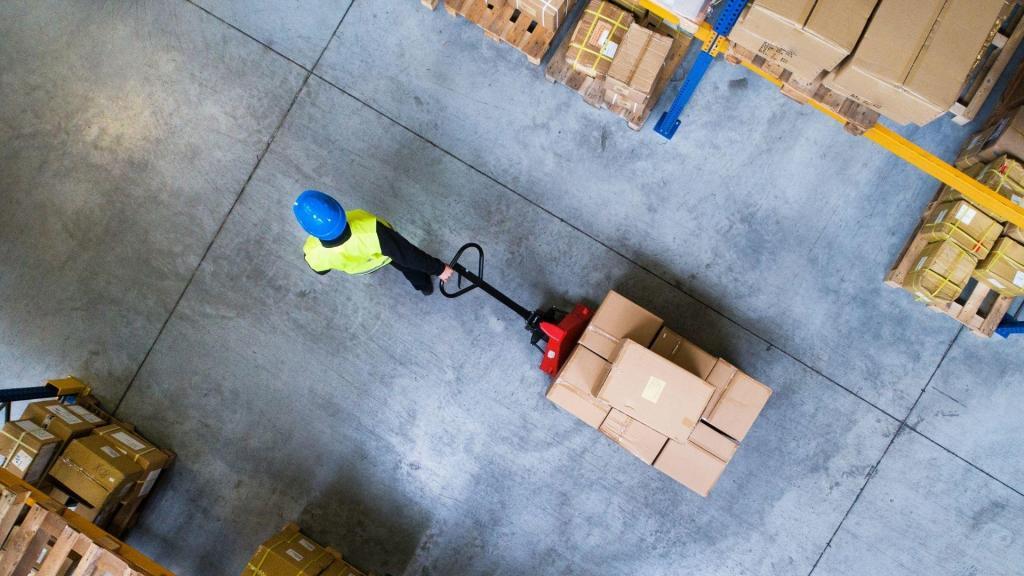At this point, we’re all aware of the chaos that the COVID-19 pandemic has brought throughout the world. Life, as we know it, has shifted radically over the course of the last year. Businesses have altered their operations to adhere to varying protocols surrounding COVID-19. Part of that has been the rapid rise of eCommerce, which is thriving like never before.
Between the pandemic and the sheer amount of new orders that are being placed on a daily basis, shipping can be a pretty stressful task in and of itself. With the influx of new online shopping, many companies are experiencing delays in shipping. In fact, I just experienced this myself. A month and a half ago, I ordered a sweatshirt from a company located in the United Kingdom, and paid for express shipping. I received the sweatshirt a week ago.
Lockdowns, inventory shortages, and delivery delays – all of these variables come into account when you think about how to ship during the pandemic. You can’t control most of what’s going on right now, but there are several things you can do to ensure that your customers receive the best shipping and customer service possible.

How COVID-19 Changed Ecommerce
COVID-19 has been terrible. There is no sugarcoating this.
One of the brightest spots in business news over the last year, other than the rapid development of an effective vaccine, was the rapid growth of eCommerce. When the business history books are written, COVID-19 might even go down as the event that really pushed eCommerce to maturity. My colleague, Brandon Rollins, had written about this post on the Marketing is the Product blog late last year.
This section really drives the point home:
With intense growth comes growing pains, though. Order fulfillment is growing in large part as a response to the rapid growth in eCommerce. Before the novel coronavirus was even discovered, eCommerce was projected to grow a whopping 19% in 2020.
As eCommerce rapidly grew, customers found themselves with more and more shopping options. When that happens, customers tend to become really picky. For example, in 2016, 63% of customers considered 3-4 day shipping “fast.” That dropped to 42% in 2017. There’s no reason to think that trend went away either.
Customers were being trained by giant companies like Amazon to expect packages to show up on their doorstep two days after ordering. Smaller organizations, therefore, knew that in order to keep up with demand, they would have to outsource fulfillment to third parties. That’s exactly what they did.
– From How Coronavirus Will Affect the Order Fulfillment Industry, Marketing is the Product Blog
Growing pains are a great way to put it. When something, anything for that matter, goes through such an extreme amount of change in a very short period of time, you can expect there to be some obstacles to overcome.
Let’s zoom in on some of those obstacles now. This will provide useful context for our practical, specific advice:
To say the coronavirus utterly pummeled our modern supply chain is to put it lightly. There were ten specific impacts that led to everything from toilet paper shortages to three-week waiting lists for Xboxes:
- Logistics companies involve a lot of people in close contact. Health and safety needs slowed down extremely time-sensitive processes.
- Country-wide lockdowns and travel restrictions made it really hard to ship items.
- Panic buying made it impossible for many industries to estimate demand.
- Supply chains had to be reconfigured to deliver medical supplies.
- Prices fluctuated unpredictably. At one point, oil had a negative cost.
- Communication slowed down.
- Just-in-time supply chains fell apart when the steady flow of materials stopped.
- Rigid supply chains snapped when they couldn’t implement a Plan B.
- Confusing supply chains became unmanageable in complexity.
- It became extremely obvious how dependent much of the western world was on China for certain items.
– From How Coronavirus Will Affect the Order Fulfillment Industry, Marketing is the Product Blog. This section neatly summarizes the main ideas written about in the Fulfillrite blog post How Coronavirus Disrupted Supply Chains Everywhere.
There were several key issues that were plaguing businesses in nearly all industries. Like we said: most of this is out of your hands. It’s important to recognize this.
Yet there are still some things you can proactively do to help ensure that your customers are happy and satisfied when they receive their products.

4 Tips for Shipping During the Pandemic
1. Understand where your inventory is coming from.
Try to understand where your inventory is coming from. Knowing that you have to import goods or inventory means that you’re aware it could take longer than expected to reorder inventory due to the pandemic. Make sure that you stay up to date on the status of where your goods are shipping from. Not only is understanding where it is coming from important, make sure to consider any additional costs due to shipping during the pandemic.
Want to take this one step further? Consider where the raw materials used in your inventory are coming from. That can help you anticipate delays before your manufacturer or supplier reports them to you.
2. Keep an open line of communication with your customers.
The last thing that I want when waiting for a product to arrive is to not have any clue as to where it is. I want to be updated every step of the way, and updated as to any changes that come about. For many of you, we share this same desire. If you are facing delays, holds, or inventory storages, make sure that you are communicating with your customers as to why that is happening, and how you plan to fix the problem.
Your customers, and the reviews they leave behind publicly, will thank you for it in the future. People remember companies who go the extra mile in ensuring a positive experience, even after the transaction is long complete.
3. Look into direct express shipping options to help combat delayed shipping times.
If you are facing major delays, and the standard shipping options would take too long, look into some options that could expedite shipping. That might mean overnighting your goods or timing delivery drop-offs so to shave one day off delivery time. Do your due diligence in finding options that can get your product to the customer in a speedy manner.
Alternatively, if this is an undue burden for your business, consider outsourcing fulfillment. Fulfillment companies are very good at making sure that items are shipped as quickly as possible for a reasonable price.
4. Take the necessary steps to ensure safe and clean delivery from start to finish.
COVID-19 is still running rampant throughout the world, so make sure that you are taking every step you can to help stop the spread. That includes providing contactless delivery and taking appropriate cleaning measures for those handling the products.
There has never been a more pressing time to take the right steps to stay clean and healthy. Keep that mindset up throughout the timeline of the order, and your customers will thank you for it. Remember: even if you’re not concerned about the virus, your customers probably are. As recently as September 2020, 55% of Americans were very or somewhat scared of contracting COVID-19, and we’ve had a tough winter since.
Final Thoughts
We have seen firsthand this past year that sometimes, life is out of our control. That’s true when it comes to shipping too, at least to some exstent.
Even still, take some time to ensure your customer has a good experience. Let them know when there are delays, and try very hard to prevent them in the first place. We all have too much to worry about right now, so make sure your customers are not stressing about their sweatshirt not arriving on time!
You’ve done everything by the book. Your Kickstarter campaign is almost ready to launch.
You made a great product. Built an audience. Set up a campaign page.
But how do you ship it?
We put this checklist together to help you get started. It's free.





